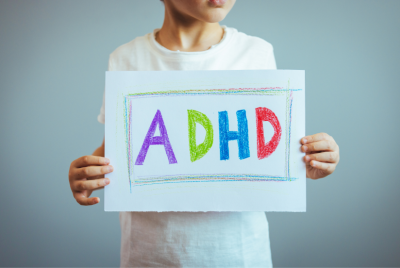Refractory Celiac Disease: Unraveling the Mystery
Hey there, folks! Welcome to our in-depth exploration of Refractory Celiac Disease or RCD. If you or a loved one has been grappling with the enigma that is refractory celiac disease, you’re in the right place. We’ve got your back, and by the end of this read, you’ll be armed with the knowledge you need to navigate this complex condition. So, grab a cup of coffee, get comfortable, and let’s dive right in.
Understanding Refractory Celiac Disease
Let’s begin with the basics. What exactly is refractory celiac disease? Well, it’s not your run-of-the-mill celiac disease. It’s the stubborn, hard-to-treat cousin that refuses to play by the rules.
What Sets It Apart?
So, what makes refractory celiac disease so distinct? Unlike regular celiac disease, where avoiding gluten is the golden rule, RCD is when the gluten-free diet just doesn’t cut it anymore. It’s like trying to tame a wild stallion with a feather duster – ineffective and frustrating.
Types of Refractory Celiac Disease
Before we dig deeper, let’s talk about the two types of refractory celiac disease:
- Type I: This type involves persistent symptoms and inflammation in the small intestine, despite following a strict gluten-free diet. It’s like fighting an invisible enemy.
- Type II: Here, things take a more sinister turn. Type II is characterized by abnormal clonal lymphocytes, which can eventually lead to complications like lymphoma. It’s the celiac disease’s dark side.
Causes and Triggers
The Hidden Culprits
Now, let’s talk about what might be causing this relentless condition. You see, RCD doesn’t just pop out of thin air. It often has underlying reasons.
Genetics at Play
Genetics play a substantial role. If you’ve got a family history of celiac disease, your risk of developing refractory celiac disease might be higher. It’s like inheriting a troublesome heirloom.
Cross-Contamination Woes
Cross-contamination is another sneaky culprit. Even a tiny crumb of gluten can wreak havoc for someone with refractory celiac disease. It’s like trying to keep your room clean while a tornado rages outside – nearly impossible.
Misdiagnosis and Delayed Treatment
Sometimes, a misdiagnosis or delayed treatment can turn a simple celiac disease into its refractory counterpart. It’s like misplacing your keys and realizing it when you’re already late for an important meeting – too little, too late.
Symptoms That Speak Volumes
The Silent Agony
Now, let’s get into the nitty-gritty – the symptoms. These are the signals your body sends when it’s grappling with RCD.
Digestive Distress
- Unrelenting abdominal pain: It’s like a constant thorn in your side.
- Chronic diarrhea: Your bathroom becomes your best friend.
Nutritional Deficiencies
- Weight loss: The scales drop, but not in a good way.
- Anemia: Feeling tired all the time becomes your new normal.
General Discomfort
- Fatigue: Your energy levels hit rock bottom.
- Skin rashes: Itchy, uncomfortable, and relentless.
Diagnosis: The Detective Work
Connecting the Dots
Diagnosing RCD is like being a detective in a mystery novel – it takes skill and perseverance.
Biopsy Matters
A key tool in diagnosis is a small intestinal biopsy. It’s like finding the missing puzzle piece to complete the picture.
Rule Out Other Possibilities
Doctors often have to rule out other conditions that mimic RCD. It’s a process of elimination, like figuring out who stole the cookie from the cookie jar.
Treatment Options
The Battle Plan
So, how do you fight back against this relentless condition? Treatment for RCD is like a well-thought-out battle plan.
Immunosuppressive Therapy
For Type I, immunosuppressive therapy might be the way to go. It’s like calming down a raging storm within your immune system.
Stem Cell Transplant
In extreme cases, a stem cell transplant could be an option for Type II. It’s like hitting the reset button on your immune system.
Strict Dietary Compliance
For both types, sticking to a gluten-free diet becomes even more critical. It’s like the shield that protects you in battle.
Frequently Asked Questions
1. What’s the Difference Between Celiac Disease and Refractory Celiac Disease?
Celiac disease is manageable by avoiding gluten, while RCD persists despite a gluten-free diet. It’s like comparing a breeze to a hurricane.
2. Can RCD Be Cured?
It can often be managed, but a complete cure remains elusive. It’s like taming a wild animal – it might never be fully domesticated.
3. Are There Any New Treatment Options on the Horizon?
Research is ongoing, and new treatments are being explored. It’s like a beacon of hope on the horizon.
4. Can Children Develop Refractory Celiac Disease?
While rare, children can develop it. It’s like a young hero facing an unexpected challenge.
5. What Dietary Changes Should I Make to Manage Refractory Celiac Disease?
A strict gluten-free diet is the cornerstone of management. It’s like learning a new language – challenging but rewarding.
6. Is Refractory Celiac Disease Life-Threatening?
Type II can have life-threatening complications, making early diagnosis and treatment crucial. It’s like navigating treacherous waters.
Conclusion: Navigating the Uncharted Waters
In the realm of digestive disorders, refractory celiac disease stands as a formidable opponent. But armed with knowledge, early diagnosis, and the right treatment, you can conquer it. Remember, it’s a battle worth fighting, and you’re not alone on this journey. So, if you or someone you know is dealing with RCD, take a deep breath, keep learning, and keep fighting. Victory is within reach, and the storm can be weathered.




